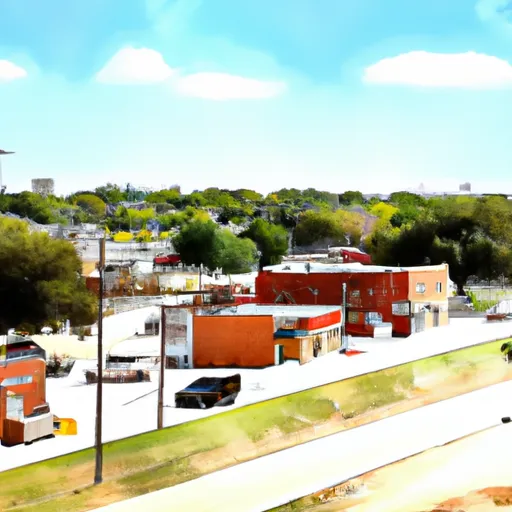-
 Snoflo Premium
Snoflo Premium
Get unlimited access to all our content
With no Ad interruptions! - Start Your Free Trial Login with existing account
Fischer
Eden Index
Climate
8.3
•
Recreation
5.0
•
Community
1.1
•
Safeguard
5.3/10

Fischer, Texas is a small town located in the Texas Hill Country region. The climate in Fischer is typically hot and humid in the summer months and mild in the winter. The area is known for its rolling hills and pristine waterways, including the Blanco River and Cypress Creek. These bodies of water provide opportunities for fishing, kayaking, and swimming. The area is also home to several hiking and biking trails, such as the Blanco State Park Trail and the Hill Country State Natural Area Trail. The hydrology constituents in the area include limestone aquifers, which are important sources of drinking water for the region. Overall, Fischer offers a range of outdoor recreation opportunities for visitors to enjoy.
What is the Eden Index?
The Snoflo Eden Index serves as a comprehensive rating system for regions, evaluating their desirability through a holistic assessment of climate health, outdoor recreation opportunities, and natural disaster risk, acknowledging the profound impact of these factors on livability and well-being.
Climate Health Indicator (CHI): 8.3
Fischer receives approximately
891mm of rain per year,
with humidity levels near 89%
and air temperatures averaging around
20°C.
Fischer has a plant hardyness factor of
8, meaning
plants and agriculture in this region tend to thrive here all year round.
By considering the ideal temperature range, reliable water supplies, clean air, and stable seasonal rain or snowpacks, the Climate Health Indicator (CHI) underscores the significance of a healthy climate as the foundation for quality living.
A healthy climate is paramount for ensuring a high quality of life and livability in a region, fostering both physical well-being and environmental harmony. This can be characterized by ideal temperatures, reliable access to water supplies, clean air, and consistent seasonal rain or snowpacks.
Weather Forecast
Streamflow Conditions
Guadalupe
Area Rivers
Guadalupe
Snowpack Depths
Guadalupe
Reservoir Storage Capacity
Guadalupe
Groundwater Levels
Recreational Opportunity Index (ROI): 5.0
The Recreational Opportunity Index (ROI) recognizes the value of outdoor recreational options, such as parks, hiking trails, camping sites, and fishing spots, while acknowledging that climate plays a pivotal role in ensuring the comfort and consistency of these experiences.
Access to outdoor recreational opportunities, encompassing activities such as parks, hiking, camping, and fishing, is crucial for overall well-being, and the climate plays a pivotal role in enabling and enhancing these experiences, ensuring that individuals can engage in nature-based activities comfortably and consistently.
Camping Areas
| Campground | Campsites | Reservations | Toilets | Showers | Elevation |
|---|---|---|---|---|---|
| Tips Park - Three Rivers | 20 | 152 ft | |||
| Braunig Lake Park | None | 514 ft | |||
| Calaveras Lake Park Dispersed | None | 526 ft | |||
| Potters Creek - Canyon Lake | 120 | 995 ft | |||
| Blanco State Park | 35 | 1,319 ft | |||
| Calliham - Choke Canyon State Park | 40 | 243 ft | |||
| Cranes Mill Park - Canyon Lake | 45 | 950 ft | |||
| Canyon - Canyon Lake | 150 | 980 ft | |||
| North Park - Canyon Lake | 20 | 998 ft | |||
| Canyon Lake Military - Randolph AFB | None | 944 ft |
Nearby Ski Areas
Catastrophe Safeguard Index (CSI):
The Catastrophe Safeguard Index (CSI) recognizes that natural disaster risk, encompassing floods, fires, hurricanes, and tornadoes, can drastically affect safety and the overall appeal of an area.
The level of natural disaster risk in a region significantly affects safety and the overall livability, with climate change amplifying these risks by potentially increasing the frequency and intensity of events like floods, fires, hurricanes, and tornadoes, thereby posing substantial challenges to community resilience and well-being.
Community Resilience Indicator (CRI): 1.1
The Community Resilience Indicator (CRI) recognizes that education, healthcare, and socioeconomics are crucial to the well-being of a region. The CRI acknowledges the profound impact of these elements on residents' overall quality of life. By evaluating educational resources, healthcare accessibility, and economic inclusivity, the index captures the essential aspects that contribute to a thriving community, fostering resident satisfaction, equity, and social cohesion.

